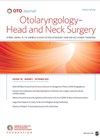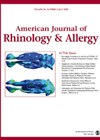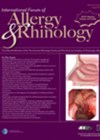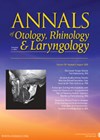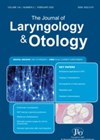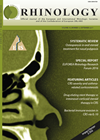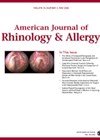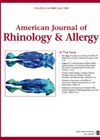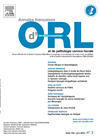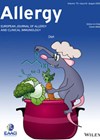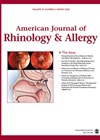
Journal Reviews
Eustachian tube dysfunction usually improves following endoscopic sinus surgery
This study investigated effects of endoscopic sinus surgery (ESS) on eustachian tube dysfunction (ETD) and factors associated with improvement. This was a retrospective study which included 302 patients over 17 years old who underwent ESS between 1 December 2016 and...
Prevention better than cure?
This systematic review looks at methods of ‘barrier protection’ or ‘barrier-enforcing’ to minimise allergic rhinitis symptoms, using 15 RCTs. Whilst the authors admit that patient numbers were small in a number of these studies, generally it seems that barrier techniques...
Location, location, location: How to get the steroid where you need it, in chronic rhinosinusitis
What almost all current guidelines on chronic rhinosinusitis have in common is the importance of intranasal steroid (INCS) use. However, it is increasingly understood that the efficacy of INCS depends on their efficient delivery to the point of need, i.e....
Laryngopharyngeal reflux - would mucolytics help?
With laryngopharyngeal reflux (LPR) being such a common presenting complaint to ENT clinics, who would not want to have more, effective treatment options for patients suffering with this annoying condition? In their small randomised, controlled trial, Chae et al put...
Does minimally invasive surgery under local anaesthesia have a role in the management of chronic rhinusinusitis?
A formal FESS procedure usually done under local anaesthesia is considered as gold standard in the management of chronic rhinusinusitis. However, success is hampered by a significant recurrence rate of polyps requiring revision surgery, long waiting lists, reluctance of elderly...
Sinus airflow after FESS using models and fluid dynamics
This is a very interesting study from Australia and New Zealand looking at flow of air into the nose and sinuses after FESS surgery. There is plenty of data regarding computational fluid dynamics for preoperative cases but not much for...
Potential benefits of turbinate sparing medial maxillectomy
Whilst endoscopic medial maxillectomy (EMM) has good results as the standard treatment option for tumours arising in the maxillary sinus, postoperative problems of crusting, epiphora and paraesthesia are not uncommon. This paper looks at modified EMM aimed at sparing the...
How much does CRS affect Eustachian tube dysfunction symptoms?
We know that chronic rhinosinusitis (CRS) and Eustachian tube dysfunction (ETD) are both very common, and that the two often co-exist but this paper looks to establish the prevalence and severity of ETD in CRS patients, and how much treatment...
The septum and breathing
The authors compared the improvement in nasal obstructive symptoms in two groups of patients. One group underwent septoplasty alone and the other septoplasty accompanied with compensatory turbinoplasty. They used the Nasal Obstruction Symptom Evaluation (NOSE) [12] and visual analog scale...
Intranasal steroids in COVID-19
COVID-19 in patients with allergic conditions does not seem to take more severe course. The Global Initiative for Asthma recommended that asthmatic patients who are on prescribed inhaled or oral steroids should continue to take them. Contradictions between guidelines in...
How to manage the concha bullosa in FESS
It is an interesting concept to assess how much impact the presence of a large concha bullosa (CB) has on both severity of chronic rhinosinusitis (CRS) and also postoperative outcomes after FESS. The authors accept that the paper has limitations...
A classification of a new cell - the retrosphenoid cell
This is a concise paper which describes a previously undefined type of cell within the sphenoethmoidal complex. It identifies the retrosphenoid cell, differentiated from an Onodi cell by being entirely within the posterior wall of the sphenoid sinus, lying between...

